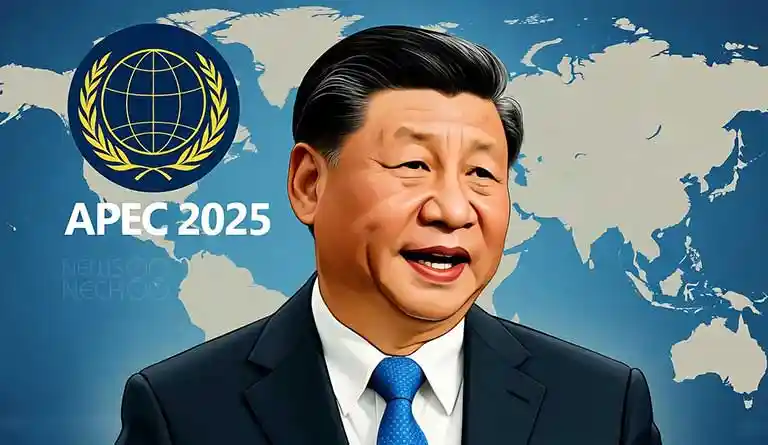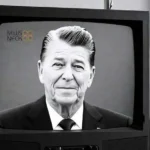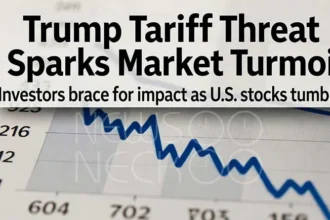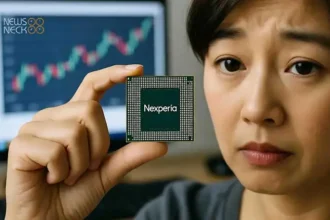Xi Takes Center Stage at Pacific Summit as Trump’s Absence Raises Global Questions
In the quiet coastal city of Gyeongju, South Korea, world leaders gathered under bright autumn skies for the Asia Pacific Economic Cooperation (APEC) Summit a meeting that was meant to display unity and economic strength. But this year, something felt different. As Chinese President Xi Jinping stood confidently at the center of the stage, one chair in the room remained noticeably empty that of former U.S. President Donald Trump.
Trump’s absence echoed through every discussion, every speech, and every handshake. The man whose trade policies had reshaped global economics had chosen to leave South Korea just a day earlier, following what was described as a “productive but tense” meeting with Xi. That private meeting had raised hopes of cooling the long-standing trade tensions between the world’s two largest economies. But when Trump flew out before the summit began, it left Xi as the uncontested figure in the spotlight.
A New Voice Leads the Conversation
At the opening session, Xi’s tone was calm yet firm. “The more turbulent the times are, the more we must stand together in solidarity,” he said, his words carrying across the packed conference hall. He reminded the 21 APEC member nations that the world was facing changes “unseen in a century,” and that unity was not a choice but a necessity.
Xi used his platform to urge cooperation and proposed a new global body to oversee artificial intelligence (AI) a bold move that positioned China at the center of the world’s digital future. His message was clear: while others talk of division, China will talk of collaboration. “China’s door to openness will not close,” Xi declared. “It will only open wider.”
Trump’s absence made Xi’s message even louder. For many, it was a sign of shifting global power — a moment when Asia’s leadership stepped forward as the United States quietly stepped aside.
The Gyeongju Declaration A Promise for Cooperation
By the end of the two-day summit, leaders signed the “Gyeongju Declaration”, a non-binding agreement that aims to strengthen trade, rebuild economies, and develop global cooperation on technology and demographic challenges.
The declaration focuses on three main goals:
- Building stronger, more reliable supply chains
- Supporting sustainable economic recovery and innovation
- Preparing for the impact of aging populations and low birth rates
AI took center stage in the discussions, with countries agreeing to share knowledge and create a common framework to ensure safe and fair use of artificial intelligence technologies.
While the declaration does not carry legal weight, it symbolizes a rare moment of consensus among nations often divided by politics and ideology.
You Might Like it: Trump ASEAN Summit 2025: Ceasefire, Trade & New Member
The Voices Behind the Summit
South Korean President Lee Jae Myung, who hosted the summit, captured the mood perfectly. “We are standing at a turning point,” he said. “Only cooperation and solidarity can lead us to a better future.”
Lee also met with Xi in a separate bilateral meeting the first between the two leaders where they discussed denuclearization of the Korean Peninsula and the fragile relationship between Seoul and Beijing. Lee admitted that ties between the two countries “have not completely recovered yet,” but he expressed hope that they could “find a path for helping one another.”
North Korea, however, had a very different view. In a statement released the same day, its Vice Foreign Minister Pak Myong Ho dismissed talk of denuclearization as a “pipedream,” accusing South Korea of “lacking common sense.” The comment once again reminded the world how fragile peace remains in the region.
You Can Also Read: Trump & Xi in Final Push to Save U.S. China Trade Truce
Japan’s Balancing Act
One of the most closely watched moments at the summit was the meeting between Xi and Japan’s new Prime Minister Sanae Takaichi. Known for her tough stance on China’s growing military presence and her support for Taiwan, Takaichi faced a delicate balancing act.
China is Japan’s largest trading partner, yet political tensions often overshadow economic cooperation. Xi extended an olive branch, saying that China is “ready to work with Japan for constructive, stable bilateral ties that meet the requirements of the new era.”
Takaichi responded carefully, emphasizing her wish to keep communication open and find “a path forward” for both countries. Her diplomatic tone hinted at a quiet understanding that rivalry and partnership may need to coexist.
The Shadow of Trump
Even though Trump was not physically present, his trade policies and tariff battles were a constant topic of discussion. His protectionist measures and economic nationalism have reshaped how global trade operates, forcing many countries to rethink their supply chains and alliances.
In Gyeongju, his empty seat was more than symbolic it represented uncertainty about America’s future role in Asia-Pacific affairs. As U.S. Treasury Secretary Scott Bessent attended in Trump’s place, many leaders wondered whether the era of American leadership in trade diplomacy was fading.
A Moment That Could Shape the Future
The 2025 APEC Summit in South Korea might not have produced legally binding agreements, but it offered something just as powerful a glimpse of the world’s changing order. With Xi Jinping standing at the center of discussions and Trump’s absence creating a political vacuum, it felt like a turning point in global diplomacy.
The speeches, the handshakes, and even the silences all carried one message: the world is moving fast, and power is shifting eastward.
As the summit closed, one could sense that this was more than a meeting it was a moment in history, one where new leaders stepped forward, old alliances were tested, and the shape of global leadership began to change.
The world is watching. And for now, all eyes are on Xi.
Author: Yasir Khan
Date: 01Nov, 2025
For More Updates, Visit Newsneck













